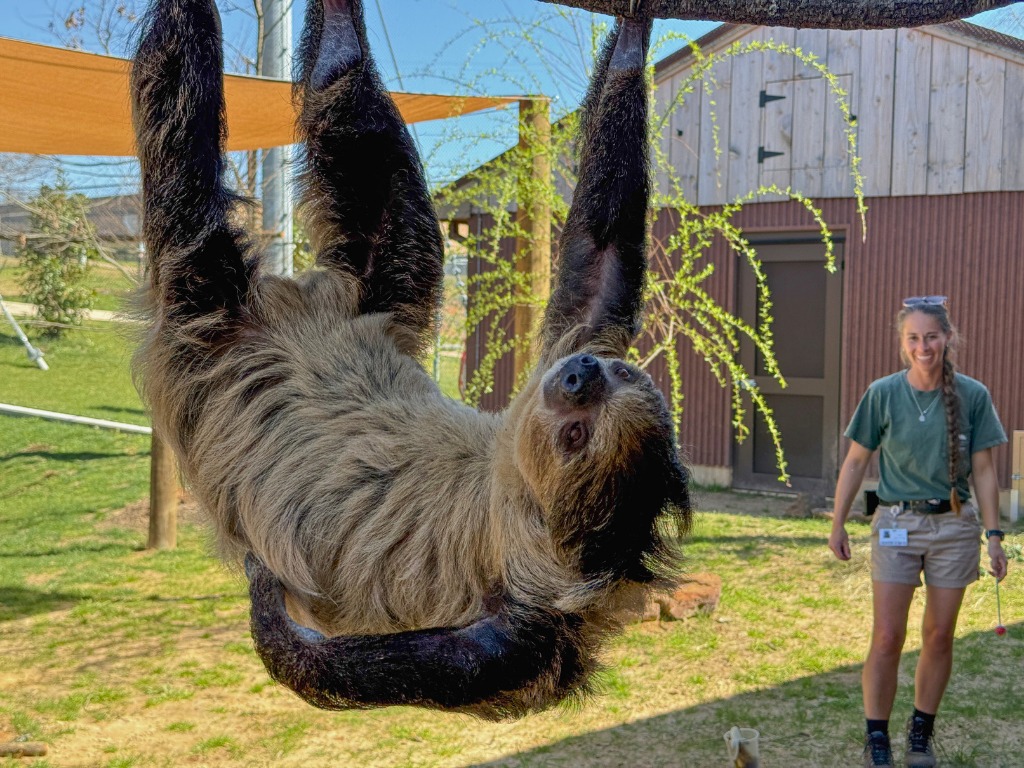- The intriguing behavior and biology of sloths in their natural habitat.
- Human interaction with sloths and their depiction in popular narratives, including anthropomorphism through humorous storytelling.
- The role of zoological facilities and keepers in sloth care and wildlife conservation.
- The importance of wildlife conservation efforts, focusing on sloths, and the challenges they face.
- The behavioral and psychological aspects of sloths that contribute to their reputation as procrastinators.
Sloths are fascinating creatures, embodying slow-paced existence and the essence of adaptability, which allows them to thrive in diverse environments. Their intricate lifestyles and capabilities provide insight into their biology and evolutionary pathways. As we explore these aspects, consider their arboreal nature, dietary practices, and their role within ecosystems.
Sloths belong primarily to the rainforest canopies of Central and South America, where they have adapted to an arboreal lifestyle. Their slow metabolism reflects a diet primarily composed of leaves, notably those of the cecropia tree, which is abundant in sloth habitats. This diet is low in energy, accounting for their deliberate and sluggish movements. Sloths possess a multi-chambered stomach, similar to that of ruminants, allowing them to digest tough plant material efficiently. Their unique physiology is complemented by an extraordinarily slow rate of digestion, as it can sometimes take up to a month to process a single meal.
Their evolutionary journey is as captivating as their behavior. Sloths, along with armadillos and anteaters, are part of the superorder Xenarthra. This group’s distinct evolutionary traits suggest that sloths have a lineage that dates back millions of years, far preceding the formation of the Americas as we know them today. Fossils of giant ground sloths show that their ancestors were much larger and terrestrial, a stark contrast to the small, tree-dwelling creatures we observe today.
Human fascination with sloths often leads to their portrayal in anthropomorphic terms. Whether through children’s books or viral memes, sloths are frequently depicted as the epitome of relaxation and indolence, often attributing human traits to them. This phenomenon extends to narratives like "Oh, me? I’m just hangin’ around with my keeper friends." Such depictions can endear the public to these creatures and encourage conservation efforts, but they also risk oversimplifying and misrepresenting their true nature.
Animal keepers, like Keeper Hayley, are pivotal in bridging the gap between human perception and the realities of animal life. The personal anecdotes and stories about animals help create a connection between people and wildlife. Keepers provide invaluable care, ensuring the physical and psychological well-being of animals. They observe behaviors, monitor health, and engage in enrichment activities designed to simulate natural behaviors and challenges.
Zoological institutions play a critical role in conservation, not only by housing sloths and educating the public but also by participating in breeding programs and research that aid in preserving biodiversity. The conservation of sloth habitats is paramount, as deforestation poses a significant threat to their survival in the wild. So, integrating wildlife conservation efforts into their mission is vital for the long-term survival of sloths and other forest-dependent species.
A significant challenge in wildlife conservation is balancing the needs of human and animal communities. Conservation strategies often involve creating protected areas, restoring degraded habitats, and fostering community engagement to reduce human-wildlife conflicts. For sloths, this means promoting responsible tourism, supporting reforestation projects, and implementing sustainable land-use practices.
Educating the public about sloths involves more than just showcasing their slow lifestyle. It’s crucial to increase awareness of the environmental challenges they face and the importance of rainforest ecosystems. Narratives that highlight their supposed procrastination, like the whimsical notion of a sloth writing a book titled "The Art of Procrastination," cleverly draw attention to their real-world counterparts’ desperate need for conservation efforts.
The common image of a sloth as a laid-back procrastinator offers an ideal platform to educate about the environmental conditions dictating their behavior. Their languid movement is a product of energy conservation rather than laziness. This aspect of sloth biology is a key takeaway for anyone interested in understanding animal behavior and ecology.
The endearing portrayal of sloths as comedians of the natural world is a double-edged sword. While it spreads awareness and generates interest, it can detract from the serious conservation issues these animals face. It’s crucial to shift focus from stereotypes to the dire need for action towards preserving their habitats and ensuring their survival in the wild.
As humans continue to encroach upon natural habitats, it’s more important than ever to integrate educational narratives that emphasize real-world challenges and solutions. Conservationists, educators, and zoological facilities must continue to advocate for the protection and restoration of habitats not just for sloths, but for the multitude of species that rely on these ecosystems.
Our interaction with sloths, such as the symbolic friendship highlighted in "Oh, me? I’m just hangin’ around with my keeper friends," reflects a growing empathy towards wildlife. While we indulge in the creative anthropomorphic journey of sloths through stories and humor, it’s crucial to maintain a realistic perspective on the challenges they and other wildlife face. Through education, conservation, and cooperation, we can aim to preserve these creatures and their habitats for generations to come.
*****
Source Description
Oh, me? I’m just hangin’ around with my keeper friends. As you can tell by Keeper Hayley’s big smile, I’m quite the charmer and comedian. I’m actually writing a book called ‘The Art of Procrastination: A Sloth’s Guide to… well, I’ll finish it later. 🦥


